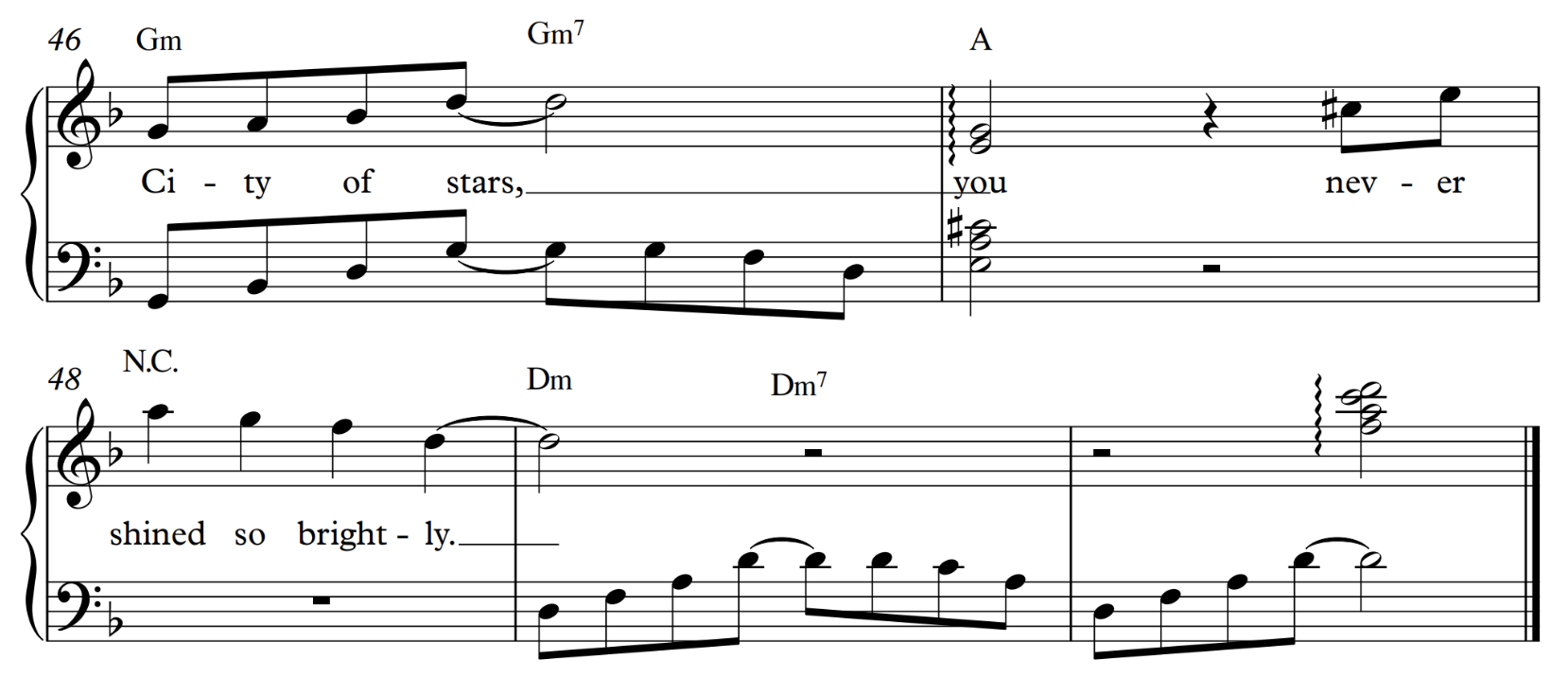Why La La Land Can Be So Gut-Wrenching: A Short Musical Analysis of “City of Stars”
“City of Stars” primarily uses melodic tension and release and specific chord progressions to convey the emotion of hope throughout the piece.
This hope is conveyed through the piece by including parts which make the listener feel uneasy or doubtful interspersed with other parts which are happier and more optimistic. The piece is in the key of D minor, and strays from the tonic, mediant, and dominant frequently in order to build tension in the piece, and, for the most part, resolves this tension to make the listener feel at ease.
One instance in which the piece allows the unease to make an appearance is in measures 12-13 during “Who knows?”, where there is a minor second ending on B flat, the submediant. Generally, phrases are expected to land on the tonic, mediant, or dominant in order to convey a resolution, and by subverting this expectation and going to a less stable note, the piece manages to maintain an air of discomfort.

In measure 30, “you’ll be alright” returns to D minor, with a D in the bass, making the listener feel at home during the delivery of a line which has the intent to convey a feeling of comfort.

In the line after, the words “I don’t care if I know” are also accompanied by the chords B flat and C, with the C chord being held for one measure. This line embodies uncertainty, with the singers expressing how they may not know where they are going to end up, and that feeling is reflected with the vii chord being held.

Measures 38-39 do something similar, but the supertonic is held for half a measure in the melody after stepping up from D, which leaves the listener in a limbo. This then resolves in measure 39, where “stay” returns to D, and is held for another measure.

Here, Measure 37 also imitates the sound of a heartbeat, reminding listeners of the feeling of anticipation. Since the rhythm is somewhat unorthodox, it takes the listener out of the song for a moment, and brings them back along with the feeling of waiting for something to happen.
The piece also ends with a chord progression that somewhat imitates a perfect authentic cadence, with a V chord (A) moving to a I chord (Dm) with a D in the melody. Since the D is also in the bass, this may indicate that the chord is in root position. After this, there is a short bit of music which continues with an I7 chord (Dm7), but the end of the vocal portion forms this cadence with about one measure in the middle where the notes do not belong to a chord.

The organization of the piece also contributes to the hopefulness in the piece, with the first repeat being approached with and including an ending of a question, and the second repeat including an ending with more comforting lines describing the love the characters are looking for.
Overall, this piece utilizes various techniques, including the frequent use of tension and release in the melody and cadences to make the listener feel a sense of hope while listening to the piece.